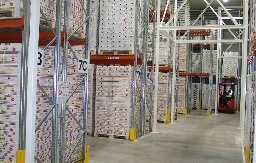The nature of stock
 Firms have to manage their people and their processes. They also have to control their usage of materials, and the quality of the products they produce. This leads to the twin topics of:
Firms have to manage their people and their processes. They also have to control their usage of materials, and the quality of the products they produce. This leads to the twin topics of:
- Stock control
- Quality control
Both of these operations have changed significantly over the last few years, largely as a result of developments in Japan. We will start this unit by considering the control of stocks.
If you examine a typical factory you will see many stores or warehouses partly full of a vast range of materials. Most of these have a purpose (although some may be obsolete), and can be classified under a number of headings.
List as many as you can, then click on STOCKS to see if your list corresponds with ours.

For the Business and Management course, we normally consider three main categories of stock:
- Raw materials
- Work-in-progress
- Finished goods
Together these three are normally regarded as the inventory of a firm; the materials and goods required in order to produce for, and supply to, the customer
It is important that you recognise that the term stock can cover each, and all of these categories. For a firm suffering from liquidity problems, it would clearly be preferable if its stocks were composed of finished goods ready for sale (and for which there is a demand), rather than piles of unused raw materials. The accounts of a firm need to be studied carefully to identify the nature of the stockholdings, to allow for a better evaluation of its financial position.
